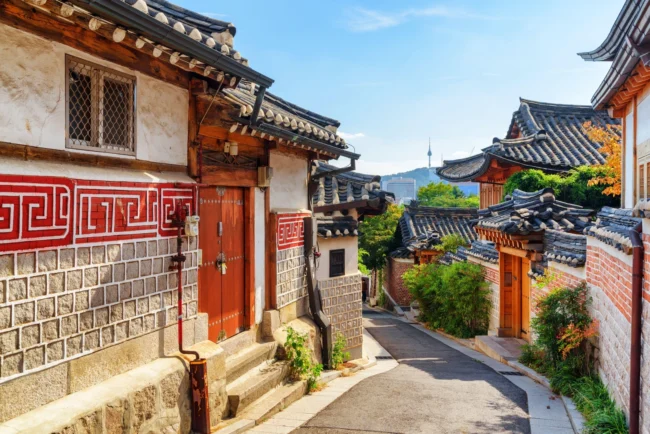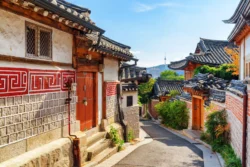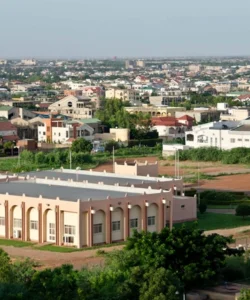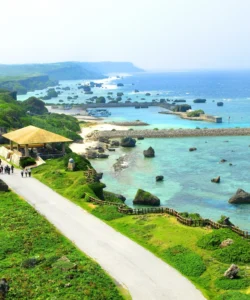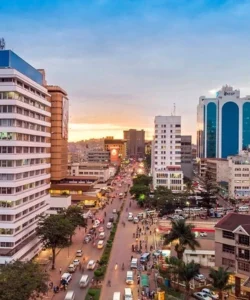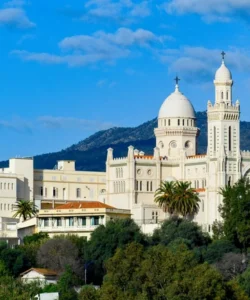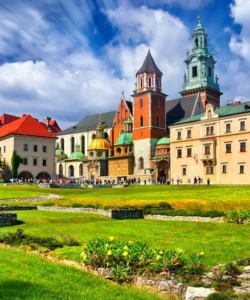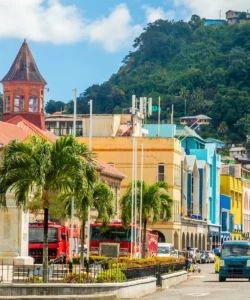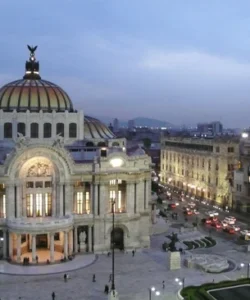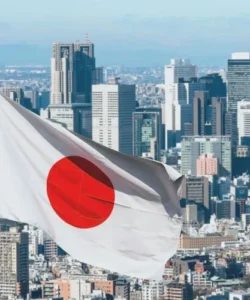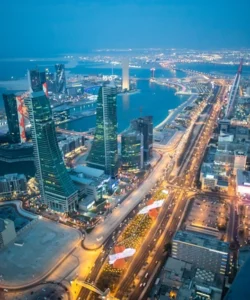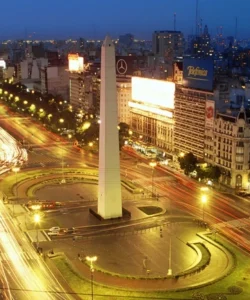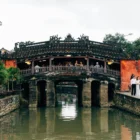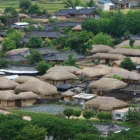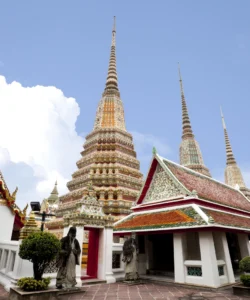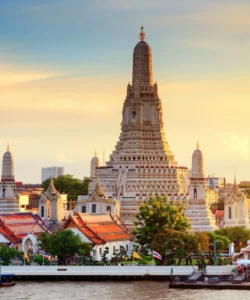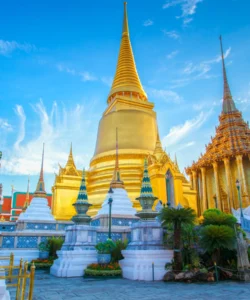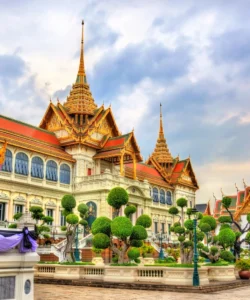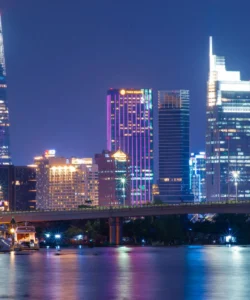Bukchon Hanok Village is a charming traditional Korean village nestled between Gyeongbokgung Palace and Changdeokgung Palace in Seoul, South Korea. Unlike other hanok villages that are reconstructed, Bukchon is a real residential neighborhood with a history spanning 600 years, offering a living glimpse into the architectural and cultural heritage of the Joseon Dynasty. Its narrow alleys and well-preserved traditional Korean houses (hanoks) provide a serene contrast to the bustling modernity of Seoul.
Name: Bukchon Hanok Village (북촌한옥마을; 北村韓屋마을)
Address: The village is an area rather than a single address, roughly encompassing Gahoe-dong, Gye-dong, Samcheong-dong, and Jae-dong in Jongno-gu, Seoul, South Korea. A good starting point is usually the Bukchon Traditional Culture Center or the Gyeongbokgung side.
How to get there:
Bukchon Hanok Village is centrally located and easily accessible by public transport:
- By Subway:
- Anguk Station (Seoul Subway Line 3, Exit 2 or 3): This is the most common and convenient access point. From Anguk Station, follow the signs or simply walk east along Gyedong-gil Road or north into the village alleys. It’s about a 10-15 minute uphill walk to the main viewing spots.
- Gyeongbokgung Station (Seoul Subway Line 3): A bit further, but allows for a visit to Gyeongbokgung Palace beforehand.
- By Bus: Numerous bus routes stop along the major roads surrounding Bukchon, such as Gwanghwamun Plaza or Anguk-dong.
- By Taxi/Ride-Sharing Services: Taxis are readily available and can drop you off at various points within or around the village.
- Walking: Its proximity to Gyeongbokgung Palace, Changdeokgung Palace, and Insadong makes it ideal for combining visits on foot.
Landscape and Architecture:
Bukchon Hanok Village is renowned for its well-preserved traditional Korean residential architecture and its hilly, intimate urban landscape:
- Hanok Houses: The defining feature of Bukchon are its hundreds of traditional Korean houses (hanoks). These are characterized by:
- Curved Tiled Roofs (Giwa): Often dark grey or brown, with elegant, upturned eaves.
- Wooden Framework: Natural wood is extensively used for pillars, beams, and doors.
- Ondol (Underfloor Heating): Traditional heating systems are integrated into the floors.
- Inner Courtyards: Many hanoks have small, private courtyards at their center.
- Natural Materials: Built using natural materials like wood, earth, and stone, designed to blend with the environment and provide insulation against varying climates.
- Narrow, Winding Alleys: The village’s charm lies in its intricate network of narrow, sometimes steep, cobblestone or stone-paved alleys, which invite exploration and offer unexpected views.
- Hilly Terrain: Built on a gentle slope, the village offers picturesque views over the hanok rooftops towards the modern Seoul skyline, creating a stunning juxtaposition.
- Integration of Old and New: While traditional, many hanoks have been sensitively modernized on the inside to accommodate contemporary living, guesthouses, cultural centers, and small shops, showcasing a successful blend of heritage and modern life.
- Observation Points: Specific “photo spots” (often marked) within the village offer the most iconic panoramic views of the hanok rooftops and the cityscape.
- Cultural Centers and Workshops: Many hanoks have been converted into cultural centers, craft workshops (e.g., traditional embroidery, paper crafts), museums, and tea houses, allowing visitors to engage with Korean traditional culture.
What makes it famous:
Bukchon Hanok Village is famous for:
- Authentic Living Museum: Unlike open-air museums or reconstructed villages, Bukchon is a real, active residential neighborhood. People live in these hanoks, making it a living, breathing testament to Korea’s past. This authenticity is its primary draw.
- Historic Preservation: It’s one of the largest and best-preserved collections of traditional hanok houses in Seoul, showcasing the architectural styles of the Joseon Dynasty.
- “Eight Scenic Views of Bukchon”: Specific spots within the village are famous for offering particularly picturesque views of the hanok rooftops, intricate alleyways, or the juxtaposition of traditional architecture with modern Seoul.
- Cultural Immersion: Visitors can experience various aspects of traditional Korean culture through numerous cultural centers, workshops (e.g., kimchi making, traditional painting), and guesthouses (hanok stays) within the village.
- Photo Opportunities: The beautiful architecture, charming alleys, and panoramic views make it an incredibly popular spot for photography, especially for those wearing traditional hanbok.
- Proximity to Grand Palaces: Its location “between the palaces” (Gyeongbokgung and Changdeokgung) highlights its historical significance as a residential area for high-ranking government officials and royal family members during the Joseon Dynasty.
Differences from some other wonders:
Bukchon Hanok Village stands out from other historical sites and villages due to several key distinctions:
- Living Residential Area: This is its most significant difference. While other historical sites are often ruins (e.g., Orkhon Valley, some parts of Gyeongbokgung Palace) or open-air museums/reconstructions (e.g., similar “folk villages” in other countries), Bukchon is a currently inhabited community. Visitors are explicitly asked to respect residents’ privacy, emphasizing its living nature. This creates a more authentic and less “staged” feel.
- Urban Integration: Unlike remote historical villages or isolated cultural sites, Bukchon is seamlessly integrated into the bustling modern metropolis of Seoul. This creates a unique and striking juxtaposition where ancient traditions stand in direct contrast with contemporary urban life just outside its narrow alleys.
- Focus on Residential Architecture: While palaces (Gyeongbokgung) showcase grand royal architecture, Bukchon focuses on the everyday, yet elegantly designed, traditional Korean residential architecture (hanoks). It provides insight into the domestic and daily lives of historical Korean society.
- Hilly, Intimate Scale: Its labyrinthine alleys and hilly terrain create a more intimate and organic feel compared to the grand, formal layouts of palaces. This encourages leisurely exploration and discovery around every corner.
- Evolutionary Preservation: The fact that many hanoks have been subtly modernized inside for contemporary living, while maintaining their exterior integrity, showcases a unique approach to living heritage preservation where tradition is adapted for the present, rather than frozen in time.
In essence, Bukchon Hanok Village is a vibrant, living testament to Korea’s rich past, offering a tranquil and authentic cultural immersion right in the heart of its dynamic capital city.
